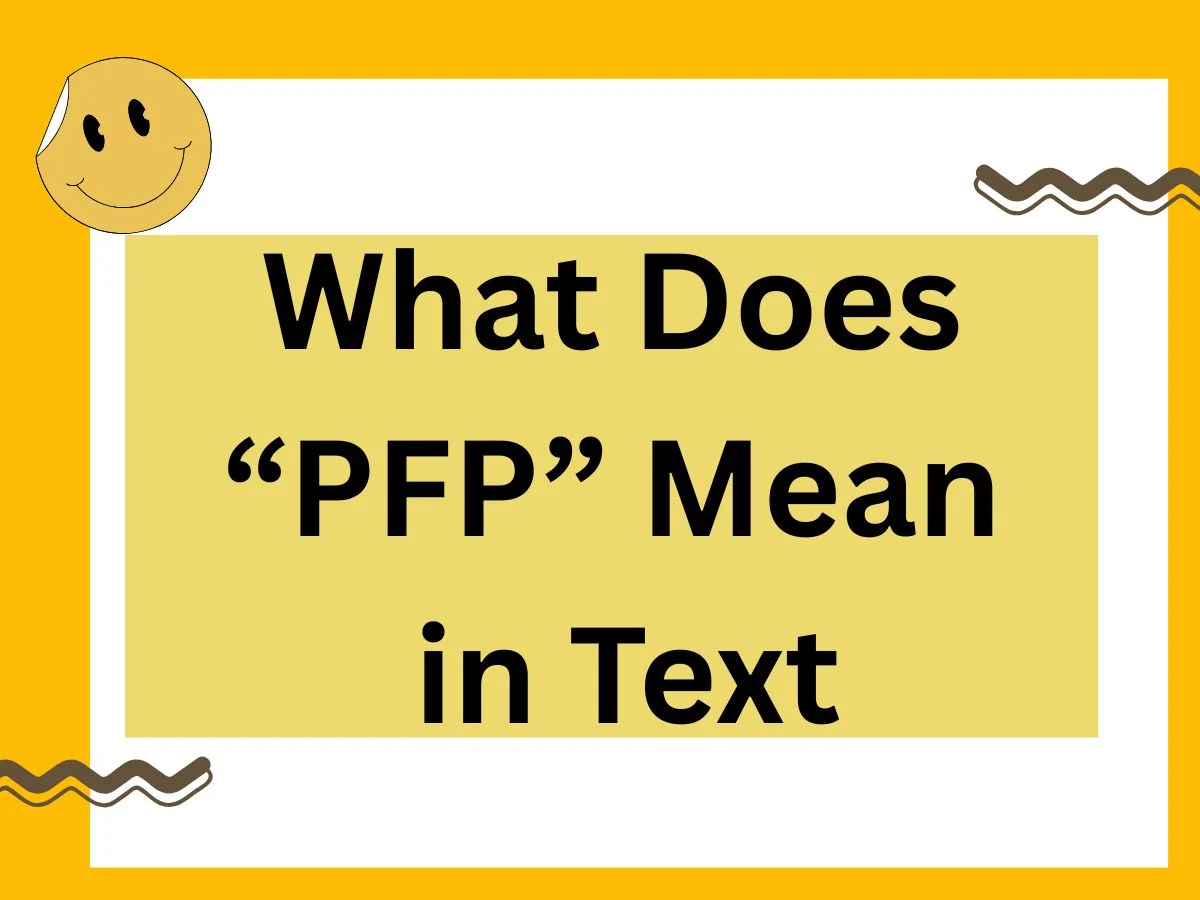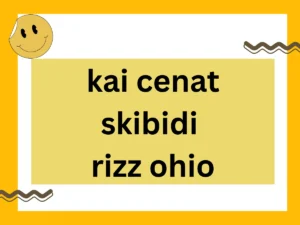Welcome to this advanced exploration of “pfp” — a ubiquitous yet often murky shorthand that appears everywhere from messaging to social media bios. In this article, we’ll dive deep into:
🔥 Rizz Line Generator 🔥
- Definition & Origin
- Tone & Context Nuances
- Polite, Professional, and Casual Alternatives
- Effective Example Sentences (10 featured examples)
- How to Choose the Best Alternative in Different Situations
- Advanced Usage Tips & SEO-aware phrasing
- Meta description for your article
Let’s begin.
1. Definition & Origin of “pfp”
“pfp” is an acronym most commonly used in digital communication that stands for “profile picture.” It refers to the small image (photograph, avatar, graphic, illustration) a user selects to represent them in online platforms—social media, forums, web services, gaming, and messaging apps.
Historical Background
Though exact origins are hard to pinpoint, “pfp” emerged organically with the rise of social media and avatar-based communities in the early 2010s. It evolved naturally as users typed quickly in chatrooms, forums (e.g., Reddit, Tumblr), and mainstream social networks (Twitter, Discord, Instagram). The term proliferated through user-driven shorthand, becoming a staple of netiquette vernacular.
Why “pfp” Over “profile pic” or “avatar”?
- Conciseness: “pfp” uses fewer characters and keystrokes—ideal for fast typing.
- Neutral tone: “pfp” is gender-neutral, casual but not dismissive.
- Trendiness: Its use signals awareness of digital norms among younger, tech-savvy audiences.
2. Tone & Context Nuances of “pfp”
Though “pfp” simply denotes “profile picture,” its tone shifts subtly based on context:
| Context | Connotation of “pfp” |
|---|---|
| Casual texting | Informal, colloquial—“Hey, change your pfp to that fun meme one!” |
| Social media caption | Youthful, community-oriented—“New pfp today :)” |
| Work-related messaging (Slack, Teams) | Still casual—but potentially dated or too informal in highly professional channels. |
| Brand or professional bio | Rarely used—too cutesy or breezy; “profile photo” is safer. |
3. Polite, Professional, and Casual Alternatives
Depending on setting—formal, semi-formal/professional, or casual—you’ll want different phrasing:
A. Polite / Formal Alternatives
- Profile photo – classic, neutral, widely accepted in formal communication.
- Profile image – slightly more contemporary.
- Display photo – common in corporate messaging (“DP” in some regions).
- Avatar – works if the image is graphical or illustrated (e.g., for gaming or brand personas).
- Professional headshot – when referencing a polished, business-ready photo (e.g., on LinkedIn).
B. Professional / Semi-Formal Alternatives
- Profile picture – standard professional usage; straightforward and clear.
- Profile avatar – hybrid tone: still professional yet modern and concise.
C. Casual / Informal Alternatives
- PFP – the shorthand itself; widely used and understood in relaxed digital environments.
- Avatar – casual yet generic; especially for gaming, forums.
- DP (Display Picture) – regional shorthand (popular in South Asia); casually acceptable.
4. 10 Context-Sensitive Example Sentences
Below are ten examples, each demonstrating a different tone or context. The alternative expression is bolded within the sentence.
- Casual texting (with friends):
“Hey! Love your new pfp, it really captures your vibe.” - Instagram caption (casual):
“Updated my profile picture to match my new color-scheme—what do you think?” - Professional email signature tip (semi-formal):
“For clarity and a polished look, please ensure your profile photo is clear, well-lit, and updated to reflect your professional branding.” - Community forum post (casual/inclusive):
“Can someone recommend a minimalistic avatar for a tech-oriented subreddit?” - Corporate Slack message (professionally casual):
“Looks like your display photo didn’t load—could you re-upload it for the team portal?” - Gaming clan chat (informal):
“Nice DP in your bio—totally matches your in-game persona!” - UX design critique (professional):
“The placeholder profile image on mobile appears too small—consider scaling it by 20% for clarity.” - Conference brochure (formal):
“Submit your high-resolution professional headshot by July 31 for speaker profiles.” - Internal wiki or help desk (formal/professional):
“Go to ‘Settings’ > ‘Account’ to upload a new profile picture; it’s visible across all internal tools.” - Messaging app introduction (casual):
“New here—just changed my pfp to something more festive for the holidays.”
5. How to Choose the Best Alternative Depending on Situation
Selecting the right term depends on three key factors: audience, platform, and tone.
A. Audience
- External professional contacts or clients → choose “profile photo,” “profile picture,” or “professional headshot.”
- Colleagues on casual internal platforms → “profile picture” or “display photo” works fine.
- Friends, gaming groups, meme communities → “pfp,” “avatar,” or “DP” are acceptable and natural.
B. Platform
- Formal corporate sites, resumes, LinkedIn → “profile photo” or “professional headshot” is safest.
- Social media (Instagram, Twitter) → “profile picture” or simply “pfp” is common.
- Gaming platforms or Discord → “pfp” or “avatar,” depending on tone.
C. Tone
- Aim for clarity and relevance:
- If helping users with settings, write “profile picture,” as it’s unambiguous.
- If aiming for trendiness or casual rapport (“Hey, your pfp looks awesome!”), use “pfp.”
- If emphasizing professionalism, “professional headshot” both elevates and clarifies.
Quick-reference selection guide:
| Situation Description | Recommended Term |
|---|---|
| Client-facing corporate setting | Profile photo / Headshot |
| Internal interoffice chat, semi-formal | Profile picture / Display photo |
| Social media, casual context | Profile picture / pfp |
| Gaming, forums, casual online community | pfp / Avatar / DP |
6. Advanced Usage Tips & SEO-Aware Phrasing
To ensure your content is SEO-friendly and suited for ranking:
- Use natural language: Avoid overstuffing “pfp”—include it thoughtfully.
- Combine variations: Mention “pfp,” “profile picture,” “avatar,” etc., so search engines recognize synonyms.
- Provide clear examples: Your audience—and Google—appreciate practical usage.
- Use headers and subheaders: They help readability and SEO structure (I’ve used h2/h3 structure already).
- Write descriptive alt text: If you included images (though you’ve asked for none), alt text should mention “profile picture (pfp).”
- Avoid disfavored wording: No word-salad, no clickbait phrasing, no repeated keyword stuffing like “best – best – best.” Keep it natural.
SEO-optimized sentence example:
“In many casual chats, users prefer to say ‘pfp’ instead of ‘profile picture’ because it’s short, easy to type, and trendy among online communities.”
7. Summary & Final Thoughts
- Meaning: “pfp” = “profile picture.” Used widely in digital communication.
- Tone matters: “pfp” is best for casual contexts; “profile picture” or “profile photo” suits professional or formal settings.
- Alternatives: Formal—profile photo, professional headshot; Semi-formal—profile picture, display photo; Casual—pfp, avatar, DP.
- 10 examples: Demonstrated each variant in realistic sentences across different register levels.
- Choosing carefully: Tailor the term to audience, platform, and tone for clarity and appropriateness.
- SEO style: Use natural phrasing, useful examples, varied keywords, and structural clarity to help the article rank well.





